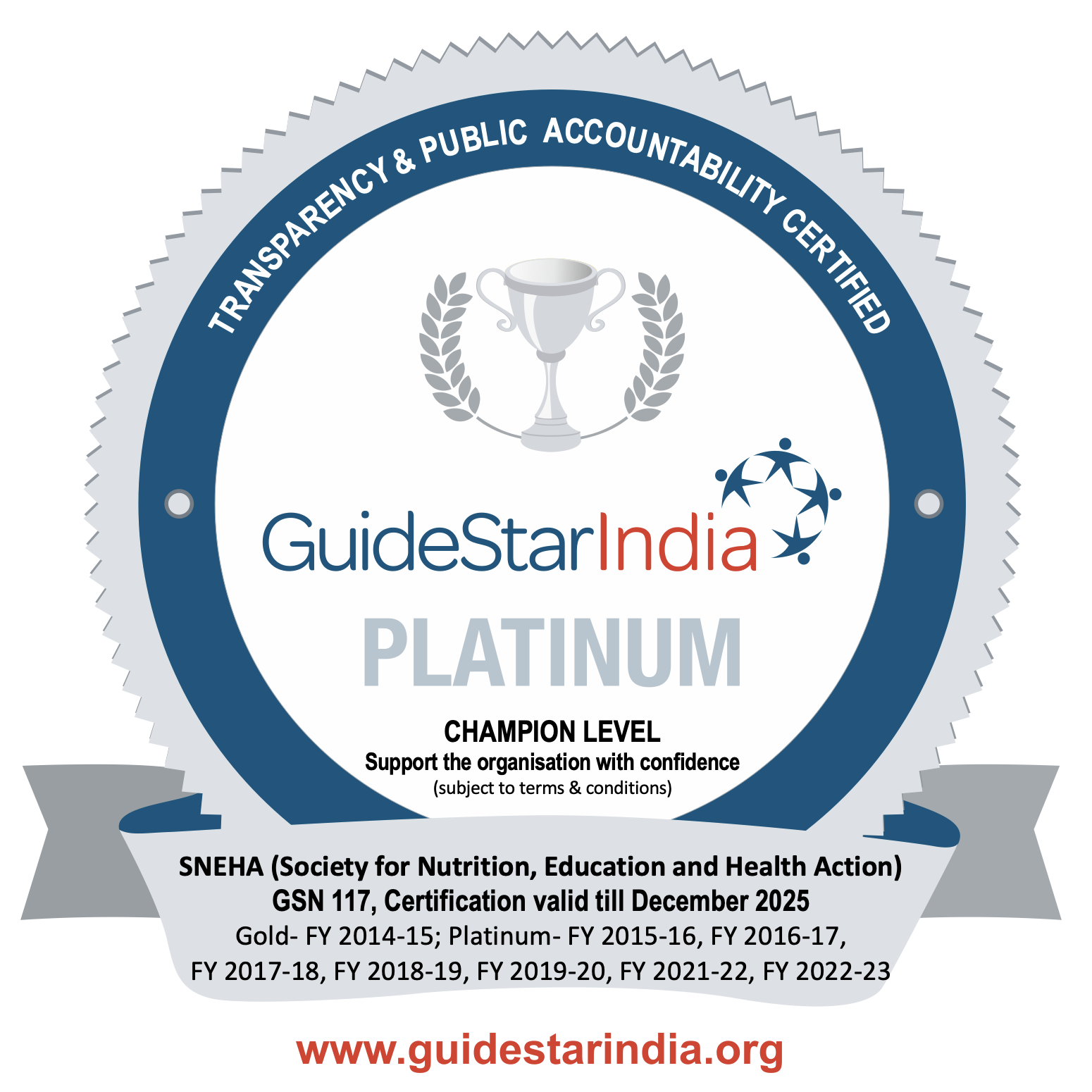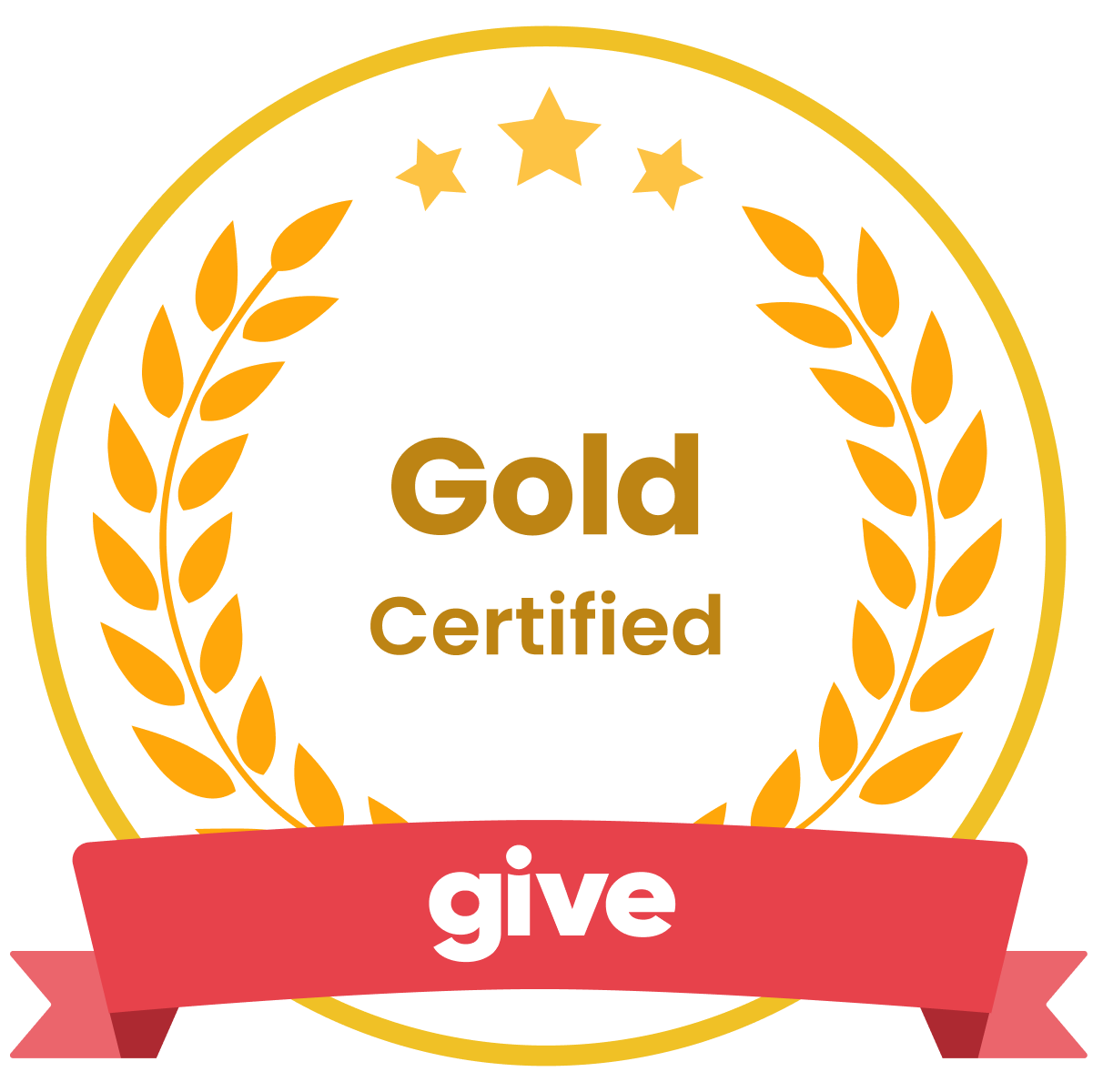Poshan Maah – When the community comes together to improve child nutrition
Oct 22 2024 / Posted in Health
R* is one of a pair of twin girls, who sits quietly on her mother’s lap on the steps of her home, deep in the lanes of Dharavi, one of Asia’s largest slums. R is moderately malnourished and is being closely tracked by SNEHA’s Community Organizer (frontline worker), alongwith the Central Government Nutrition Programs’ frontline worker (ICDS Sevika) and a community volunteer.
R was born premature and weighed 800gms at birth. She and her twin sister were well cared for in the initial months and while her twin sister is healthy, R has been constantly falling sick, taking a toll on her nutrition status. She recently moved to Dharavi from her village in North India and was identified as moderately malnourished (Z score < 2 SD) in the monthly anthropometry of children aged 0-6 years. She was immediately started on the ICDS ‘Take Home ration’ and her mother was counselled on timely and appropriate feeding, illness management, hygiene and sanitation. Her father runs a small tailoring business that has been badly affected by the pandemic, but he too has taken a keen interest in his daughter’s health. With regular counselling and support for illness management, we expect R to gradually move to normal nutrition status. SNEHA's Community Organizer and the ICDS Sevika continue to work closely with her parents to ensure that she comes out of malnutrition and stays there, for which the follow up will continue for at least six months, after which she should be well on her way to a healthy childhood like her sister!
*name changed to protect identity
Background
Well-nourished children are the foundation of thriving communities and nations. With good nutrition, children develop into healthy, bright and engaged members of their communities; and they are stronger and more resilient in the face of crisis.
The quality of nutrition in the first 1000 days, the period from the start of a mother’s pregnancy through her child’s second birthday, is a critical window for addressing long-term consequences of childhood undernutrition. Studies have found that the burden of stunting (low height for age) and wasting (low weight for height) is largest in children under two years of age.
Global momentum for improving nutrition continued to grow in 2017, and countries made important strides in scaling up nutrition programmes in pursuit of the United Nations Sustainable Development Goals (SDGs), including Goal 2 i.e ‘To end hunger and all forms of malnutrition’ by 2030 (UNICEF Annual Results Report 2017 | NUTRITION)
The protection, promotion, and support of good Infant & Young Child Feeding (IYCF) practices are central to preventing all forms of child malnutrition, including stunting, wasting and micronutrient deficiencies, as well as overweight and obesity. Despite these critical benefits, most new-borns, infants and young children around the world are not receiving the nutritious diets they need to survive and develop to their full potential. According to NFHS-4 (2015-16), only 54.9% of children under six months of age are exclusively breast-fed and 42.7% children received complementary food at 6-8 months. These inadequate feeding practises could result in one or more forms of malnutrition.
Poshan Maah 2021:
In order to mobilize communities and bolster participation in child nutrition, every year the month of September is celebrated as Rashtriya Poshan Maah across the country. This year Smt Smriti Irani, Honourable Minister, Department of Women and Child Development (WCD) visited Dharavi, Mumbai on 6th September 2021, to kickstart Poshan Maah 2021 celebrations. She was accompanied by State WCD Secretary Madam I.A Kundan and State ICDS Commissioner, Madam Rubal Aggarwal. Smt Irani visited an ICDS Anganwadi center, beautifully decorated by enthusiastic Anganwadi Sevikas and Madatnis, where she interacted with ICDS staff and reviewed the IEC material on display. After lighting of the lamp, she inaugurated a digital display for messages on nutrition. SNEHA, an NGO that works closely with ICDS in Dharavi and other informal settlements in Mumbai to prevent and reduce malnutrition, also displayed the IEC material they use for nutrition. The SNEHA team also shared the marketing campaign they conducted in Dharavi, in partnership with the public health system, to educate communities on Covid Appropriate Behaviour (CAB) supported by the Bill & Melinda Gates Foundation. Smt Irani appreciated the creative displays and use of IEC material to create mass awareness in Dharavi and highlight the importance of good nutrition and CAB.
“It is the responsibility of family and society as a whole to look after the nutritional health of a pregnant woman” said Smt Smriti Irani, Honourable Minister of Women and Child Development, as she spoke to a few pregnant women at the Anganwadi.
Smt Irani also met with parents of malnourished children alongwith the ICDS Sevika and SNEHA Community Organizer to learn about the individual cases and the support the parents were receiving from ICDS and SNEHA. She appreciated and encouraged the parents, ICDS Sevikas and SNEHA team and urged them to continue their work with the community so that pregnant women and children can be well nourished and healthy.
The month of September will continue to see several community campaigns, nutrition demonstrations, nutrition bazaars with local products, Godhbarai and Ushtavan celebrations by ICDS and SNEHA to draw attention of the community on healthy food practices and avoidance of junk food. While all energies converge in this month, we believe that healthy nutrition practices should be continued everyday and Poshan Maah celebrated throughout the year!
SNEHA's Child Health & Nutrition program 'Aahar', was initiated in 2011 covering 300 ICDS Anganwadis (population 300,000) in Dharavi and served over 24,000 children aged 0-3 years of age and 4200 pregnant women. In the period 2011-16, in phase I the program reduced prevalence of malnutrition (wasting) by 18% and in phase II by 28% . SNEHA saw a significant increase in the coverage of government services in Dharavi, headlined by a 109% increase in ICDS services received by children. Of all the ICDS mandated services, growth monitoring (weighing) and the provision of nutritional supplements saw the biggest increases of 128% and 75%, respectively. Similarly, ICDS services for pregnant women increased by 56% and services from the MCGM by 45%. Aahar demonstrates that it is possible to integrate CMAM programs within government systems.
While we greatly improved ICDS and health services, we were keen to build responsibility and accountability in the public system to provide the Government mandated services to the community. While we addressed issues on the supply side, we realized that we need to increase the awareness and uptake of ICDS services by the community.
In the next phase (2016-19), the program reduced coverage to 5 ICDS Anganwadis, three in Dharavi and two in Wadala (population 150,000), the objective was to institutionalize our intervention processes and support ICDS in performing their six mandated services while creating and building capacity of a cadre of community volunteers to increase uptake of services. The goal of the program was to build responsive communities and systems for improved child and maternal health and nutrition services for addressing and preventing child malnutrition in urban informal settlements of Mumbai. The program achieved significant improvement in ICDS services with monthly anthropometry increasing by 158% (from 31% to 80%) and malnutrition reduced by 29% (from 17% to 12%)
The next phase of Sustainability and Exit (2019-22) aims to broaden the intervention with ICDS, deepen volunteer engagement and strengthen the linkages between health and nutrition services by using a convergence approach.
Mission Dharavi – Addressing the Covid-19 pandemic in Dharavi
Mumbai, and specifically Dharavi, emerged as a hotspot for the COVID-19 virus in the period March-May 2020, with increasing number of positive cases on a daily basis. The high population density made social distancing a challenge. With families living in one-room homes with at least 5-6 family members in each home, self-isolation and home quarantine was also difficult. SNEHA, with the support of the Bill & Melinda Gates Foundation, initiated The ‘Mission Dharavi’ project with the objective of introducing and sustaining Covid Appropriate Behavior (CAB) to stem the spread of the virus in 15,000 households. We also supported families living within containment zones with fresh fruits and vegetables, to prevent them from leaving containment areas. In the Mission Dharavi Program, the community response was led by a group of COVID Yoddhas (community volunteer frontline workers) who were identified and recruited from a large pool of SNEHA volunteers already trained in addressing child malnutrition, domestic violence, and adolescent health in Dharavi. We provided them safety gear, training and guidance and they were also recognized by MCGM as “Covid Yoddhas”. The Covid Yoddhas, with support from SNEHA provided the community with necessary information on COVID-19 preventive measures, information on COVID-19 testing, quarantine and hospital information, nutrition to boost their immunity, supervised sanitation of public toilets and supported the public health authorities to increase testing and quarantine through community referrals. An innovative marketing campaign “Corona Gaya Nahi” was conducted from October’20 to March’21 conceptualized by marketing firm Siriti Creative Pvt Ltd that used multiple online and offline platforms to deliver messages in creative ways.
An endline evaluation of the program showed that the proportion of respondents who received COVID-19 information from 3 or more information sources increased from 62% to 84%. Television was the most commonly reported source of information on COVID-19 while community health workers (98%-97%), SNEHA’s Community Organizers (98%-97%), Doctors (94%-97%) and COVID Yoddhas (98%-98%) were the most trusted sources of information.
In July 2021, SNEHA alongwith four other NGO’s and MCGM partnered with private sector to vaccinate the residents of Dharavi. Over 50,000 residents of Dharavi have been vaccinated in six weeks and the group hopes to continue this important initiative.
Conclusion:
The pandemic is not over and we need to continue reinforcing CAB as well as vaccination. We also know that malnutrition is not over. We need to continue working with mothers, care-givers, children and the community at large in partnership with ICDS and public health systems, not just in the month of Poshan Maah, but till such time that malnutrition in Dharavi declines to globally acceptable levels (WHO recommends that prevalence should not exceed 5%). SNEHA is grateful to all the stakeholders who are equally invested in the issue of malnutrition and join hands with us so that children can be healthy and reach their full potential.
Share:














